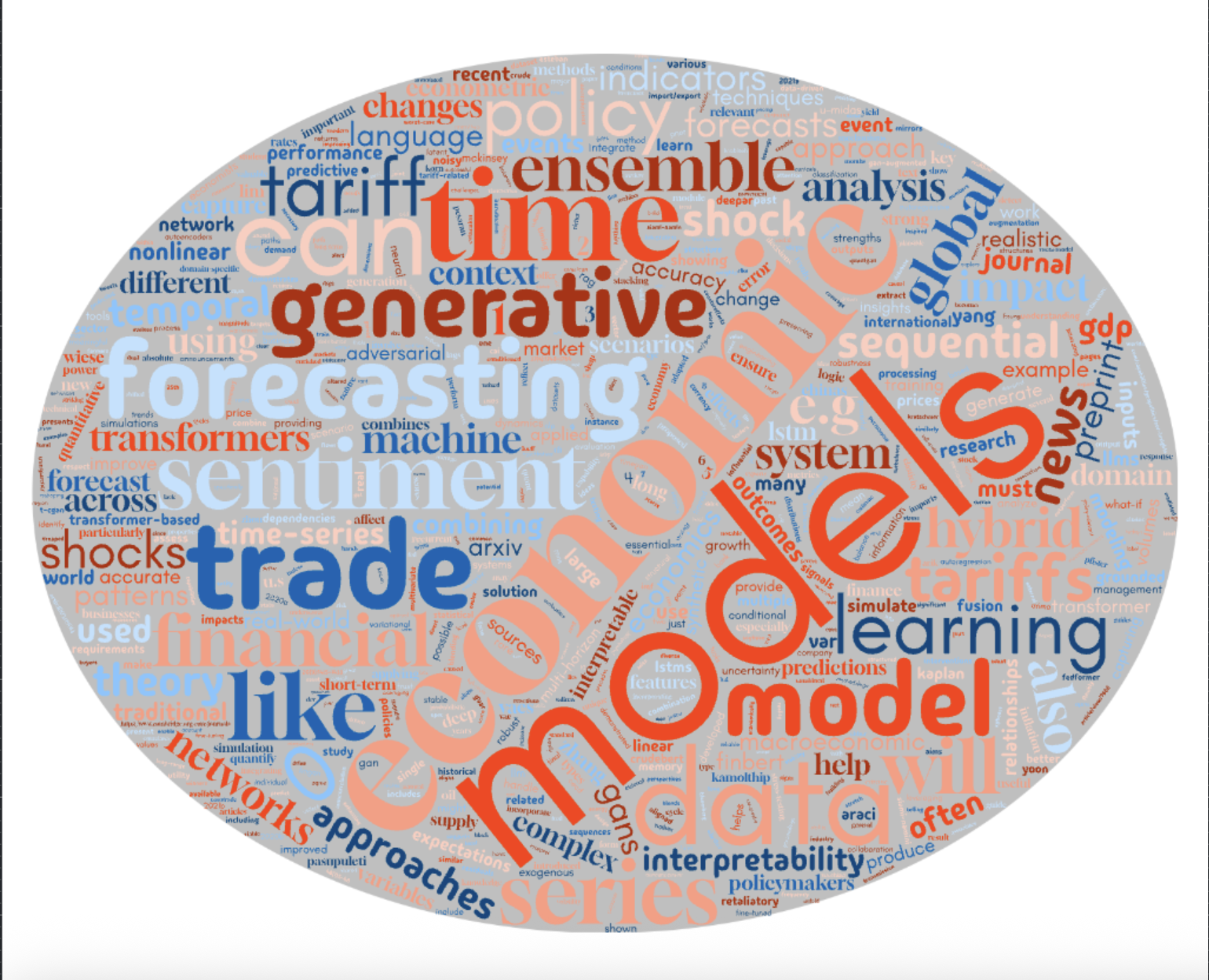Tariff Turbulence
Tariffs have been more than just prevalent in the news over the past quarter, with the US president imposing tariffs on several nations either in the form of sanctions or in a bid to make it’s domestic industries more competitive in the global market. I conducted research on this topic in a bid to understand what could be the potential ways through which we could assess/predict the impact off these tariffs on different nations. I have taken to research the macroeconomic indicators of the impact and using it to theorise a potential hybrid model which would prove ore than adequate in predicting the impact
Report Summary
This self-motivated research project, Tariff Turbulence, explored how machine learning and economic theory can be combined to forecast economic shocks caused by tariff changes. The work began by examining traditional econometric approaches such as VAR and GVAR, noting their interpretability but also their limitations in capturing today’s nonlinear and dynamic trade systems. Building on recent literature, the project proposed a hybrid framework that integrates generative models to simulate “what-if” scenarios, sequential models like LSTMs and Transformers to capture long-term temporal dependencies, and large language models (LLMs) such as FinBERT to incorporate policy sentiment and contextual signals. This blend of techniques aimed to bridge the gap between data-driven insights and economic reasoning, producing forecasts that are both accurate and interpretable for policymakers and businesses.
The technical design involved creating a pipeline that unifies macroeconomic indicators, trade metrics, tariff policies, and financial news sentiment into a consistent dataset. Generative models like Conditional GANs and VAEs were proposed to augment scarce shock data by producing synthetic but realistic scenarios, while sequential predictors such as LSTMs and Transformers were tasked with forecasting the unfolding impact of tariffs across multiple time horizons. These outputs would then be combined in an ensemble, producing risk bands and scenario envelopes to reflect uncertainty. Evaluation was planned through backtesting against historical trade disputes, such as the 2018–2019 US–China tariff cycles, using both standard forecasting metrics (MAE, RMSE) and domain-based checks for economic plausibility. By grounding the models in both AI and economic theory, the project highlighted how interdisciplinary methods can push forecasting closer to real-world application.
Data Collection → Preprocessing → Generative Simulation → Forecasting Models → Ensemble & Interpretability → Forecast Output.
A flowchart of the model creation
Word cloud of relevant terms for the research topic


